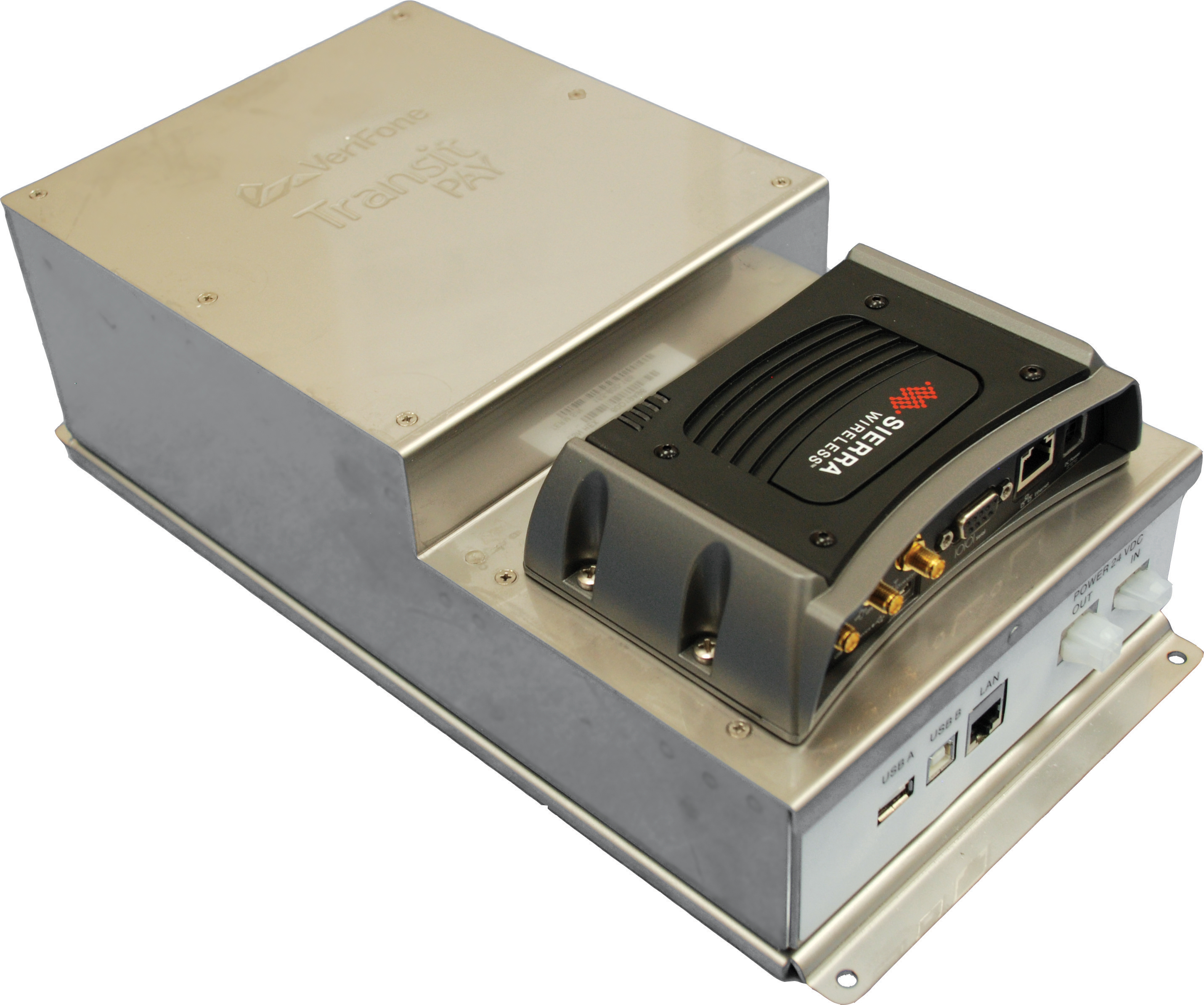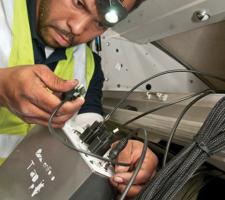
A TransitPAY controller
An unusual technology collaboration. David Crawford investigates
Early in January 2012, the New York CityWithin weeks, with the Staten Island deployment “already a huge hit” according to MTA Bus Company president Darryl Irick, the authority announced a second-stage rollout: first to the Bronx (with 1025 buses); and then to a third borough, yet to be named – both to be completed by the end of 2012.
The two remaining New York boroughs are expected to be brought online in 2013. The Bus Time initiative combines input from an unusually diverse combination of global and US-wide ITS technology providers, electronic payment specialist
Praising the start-ups when he launched the Staten Island implementation on 12 January, New York Mayor Michael Bloomberg celebrated “the entrepreneurial spirit and creativity our city thrives upon. It’s the perfect place for homegrown companies to expand”. The project formed part of Bloomberg’s 2009 Campaign Mass Transit Plan and 2007 PlaNYC proposal to prepare the city to accommodate one million more residents, strengthen its economy, combat climate change, and enhance quality of life.
Riders can use MTA Bus Time in any of three different ways:
• Using a desktop computer or smartphone, they can go to <%$Linker:
• They can text a bus stop code or intersection to a specified number, 511-123, on their mobile phones. They then receive a return text message telling them how many stops away the next service is;
• Those with a smartphone can scan a quick response (QR) code available on the ‘Guide-A-Ride’ rectangular boxes fixed to most bus sign poles and display route maps and service schedules. A free barcode-reading app can then interpret the information and take the passenger directly to the MTA mobile website.
The MTA is also encouraging local retailers to set up information screens in their stores, using a ‘do-ityourself’ application. As an alternative, it is offering an open-format data platform from which entrepreneurs such as Connecticut -based digital media specialist
Bus Time collects the vehicle’s location and other relevant data every 30 seconds from an enhanced GPS positioning module, connects this with route and schedule information and then infers actual locations using a virtual automatic vehicle location system (see below). This information is integrated with the bus driver’s login information (including the route, run and destination sign code).
Integrator
To develop the project, the MTA decided to act as its own systems integrator, with two main contractors: VeriFone for the on-bus system hardware; and Cambridge Systematics for the back-end mapping software. VeriFone has equipped the buses with adaptations of its TransitPAY fare payment controllers, which the MTA had already tested in an open-system contactless fare payment pilot.
Fitted with enhanced software (and remaining enabled for on-line fare payment), these manage the calculation of location data and its transmission to the MTA’s servers via a
VeriFone national sales manager Water Allen told ITS International that the adaptation, which involved OpenPlans Transportation, “was not overly complex. Our engineers worked with the MTA design team to define the interface requirements to their back-end mapping software as well as the overall architecture of the solution.
“The aim was to prove that the MTA could develop and install a vehicle location system with minimal hardware and infrastructure, using open standards and commercially available off-the-shelf technology.” As a result, he now sees a wider market for the product in the transit sector.
With OpenPlans Transportation as a subcontractor, Cambridge Systematics designed and built the back-end software infrastructure. This receives streams of bus location data, determine the location of buses on each route and delivers the resulting information to end users and third-party application developers with access to an API.
The system includes administrative mechanisms for managing schedules and other datasets, a permanent archive database of bus location information, and a scalable architecture. The software is based on
Accuracy
The core challenge was to ensure adequate locational accuracy given the echo effect of New York City’s urban canyons on GPS signals. As a contribution to solving the problem, over the summer of 2010 the electrical engineering graduate students worked under the direction of Professors Nicholas Maxemchuk (Columbia) and Umit Uyar (CCNY) in a special collaborative internship with the MTA. (The first of its kind for the agency, this involved them acting off-site in their own lab at Columbia University).They devised two estimation algorithms, LOCOR and LOCSNAP, which combine the GPS signals coming from the bus with
MTA
The MTA is the largest transport network in North America, serving a population of 14.6 million people living in a 12,950km2 area with an annual operating budget of US$11.8 billion. Its 6000 buses serve 2.5 million bus riders a day along 5715 route km.
Bus Time is its most recent passenger information initiative, following the progressive introduction of next train arrival on the subway. Subway users can also sign up for email and text alerts on service interruptions.
The students also worked on the development of a wireless mesh network for use in the New York subway by both commuters and the MTA, and assessed the feasibility of implementing a contactless smartcard similar to London’s Oyster across the MTA system. Both of these are in line for implementation over the next five years. According to the then MTA chief operating officer Charles Monheim: “We were interested in using the intellectual resources of the city better, and clearly there’s a concentration at places like Columbia University and City College NY. This was a good demonstration that there’s potential for a long-term relationship.”
Monheim was especially impressed with a website the students created to show their results in real-time. “We might extend that idea for ourselves – that way we can share information with our community without having to get everyone together,” he said.
The MTA sees itself as having avoided reinventing the wheel while contributing to the development of an open, real-time platform capable of being used by any public transport agency. Its commitment to openness also meant the agency could source inexpensive, non-proprietary equipment, off-the-shelf hardware, and work with a wireless network provider of its choice, so achieving cost reductions approaching 70% compared with earlier vendor pilots. Looking ahead, the authority foresees further cost savings from avoiding the need to put physical digital indicators on all bus shelters – a programme recently costed at US$150 million over five years.
Instead, it can have arrival information sent directly into riders’ mobile phones. The Staten Island and Bronx deployments follow a successful 2011 trial on the B63 route in the borough of Brooklyn, itself a successor to the vendor pilots, and represent an enhancement of the technology used there.













